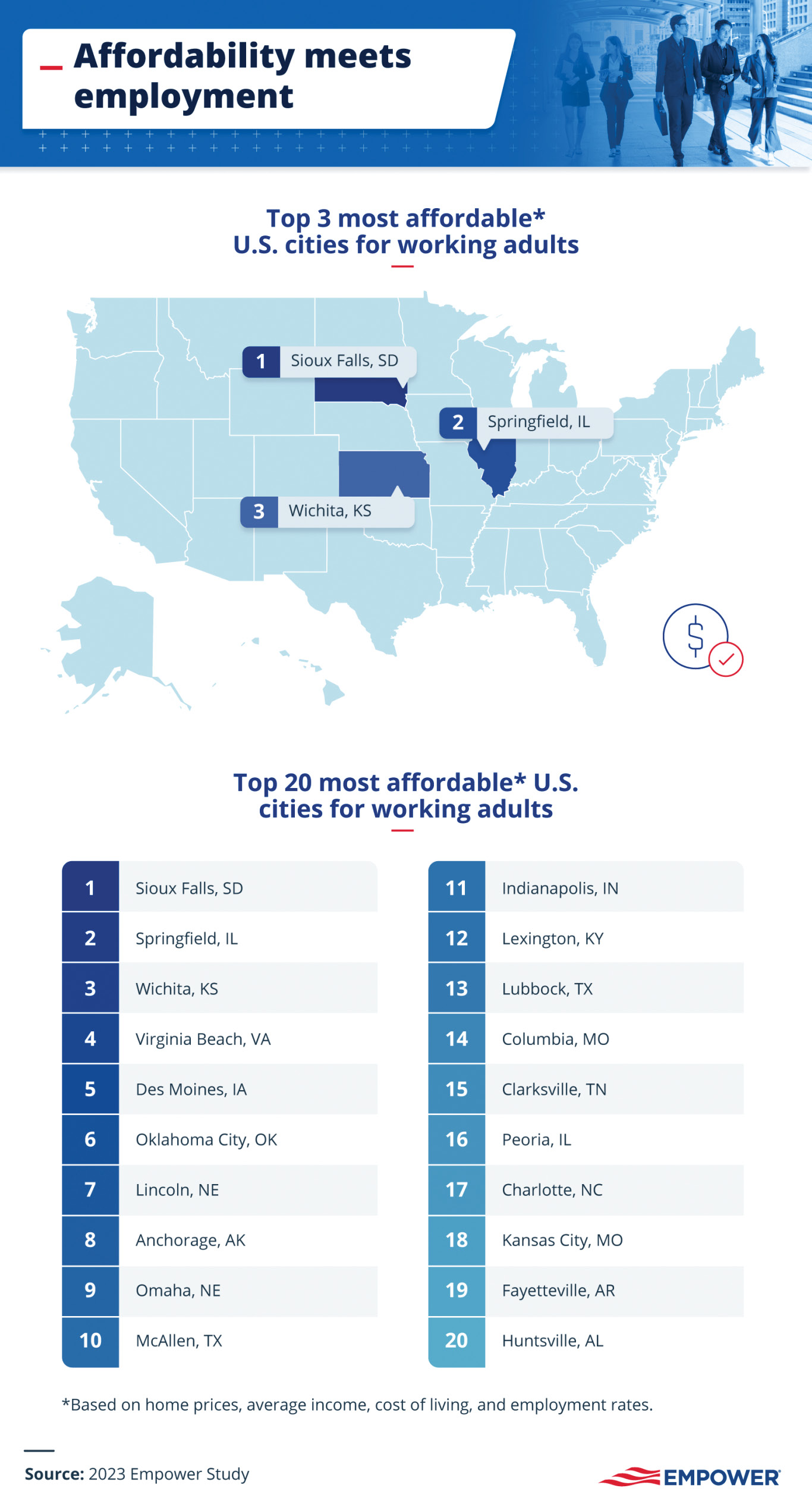If you are not using affordable housing as a metric when evaluating locations for your next corporate facility expansion project, you may want to add it to your list of factors.
Why? The answer is simple. The median cost of a home has not been this out of reach for the average American worker since the 1990s.
With home mortgage interest rates at nearly a 25-year high, the U.S. has entered a phase called the “lock-in effect.” Homeowners sitting on cheap loans don’t want to sell, and homebuyers simply cannot afford to close the deal.
Combine that with a shortage of new homes, and we have a critical undersupply of workforce housing across the country. According to a study by The Cato Institute, 87% of Americans worry about the cost of housing, and 55% of homeowners say they would not be able to afford to buy their own home today based upon current market prices and interest rates.
The National Association of Realtors says that decades of underinvestment into new housing stock is responsible for a nationwide shortage of some 5.5 million homes. On top of that, fewer homeowners are now willing to sell. From February 2020 to February 2022, the number of active listings in the U.S. declined by over 60%.
As a result, the average home price in the U.S. today is 33% more than it was pre-COVID. Meanwhile, interest rates keep rising. As of November 1, 2023, the federal funds effective rate was 5.33% — the highest it’s reached since before the Great Recession of 2008 to 2010.
For these reasons and others, site selectors are considering affordable housing when scouting locations for new plants that require the hiring of many new workers. “It is absolutely an issue that we consider in our projects,” says Tess Fay, principal and vice president of location intelligence for Global Location Strategies in Greenville, South Carolina.
“In the early project phases, we evaluate data points including median home price, home-to-price income ratio, housing vacancy and rental vacancy,” Fay adds. “When we get to site visits, we will often request to drive through neighborhoods where workers may live. We also often discuss housing challenges in our interviews with local business leaders.”
 Midwest Leads in Affordability
Midwest Leads in Affordability
Using data from the American Community Survey of the U.S. Census Bureau, Fay’s firm has compiled a ranking of the most affordable housing markets for workers in the U.S. Danville and Decatur, Illinois, emerge as the two most affordable places in the country, according to these data, followed by Johnstown, Pennsylvania; Kokomo, Indiana; and Weirton-Steubenville, West Virginia-Ohio.
Global Location Strategies also put together a heat map showing the range of housing affordability across the country. The most affordable housing markets for workers are concentrated mostly in the Midwest and the Central Plains states. While the East Coast has some pockets of affordability, housing along both coasts of the U.S. is largely unattainable for the average working family.
One community leader working to fix that is Jovan Burton, executive director of the Partnership for Housing Affordability (PHARVA) in Richmond, Virginia. “We are the backbone organization in Greater Richmond for this issue,” he says. “Most local governments around here do not have housing staff, so it is going to take a collaborative effort to make a meaningful dent. This issue is so large that it is not just confined to pockets. It is a regional issue.”
The workforce housing gap in Greater Richmond is the equivalent of 39,000 rental units. “That is our shortage,” says Burton. “We are a region that is very popular right now. We have a lower cost of living, and that helps attract a lot of new jobs and new people to this area. As people move here from Northern Virginia and other more expensive areas, it just drives up housing demand and prices here. The median rent is now around $1,400 a month in Greater Richmond.”
The need for more affordable housing is acute, notes Burton, because “four of the five most common job occupations in our region cannot afford the median rent. In reality, the majority of our workforce cannot afford the median rent here. These are hundreds of thousands of individuals. These are child-care workers, people in the restaurant and service industry, admin workers, government workers and call center workers too.”
One roadblock is zoning. Burton says that less than 5% of all land areas in the region allow for multi-family development. “Zoning impacts where things can and cannot be built. Land acquisition costs and construction costs have all gone up significantly over the last three years,” he says, “but help is on the way.”
 ‘Where Will Workers Live?’
‘Where Will Workers Live?’
The City of Richmond just announced a $100 million fund for affordable housing, with $50 million coming from the city and the other $50 million coming from a national housing organization known as Local Initiatives Support Corporation (LISC).
Jane Ferrara, executive director of LISC Virginia, said, “We look forward to working with the city to implement a strategy driven by a vision for a more affordable and inclusive city where people not only want to live, but can afford to live and thrive.”
Burton says he welcomes the new fund because “it is difficult for the workforce to become first-time homebuyers. When a jobs project is announced, where will all the workers live? We have a one-month supply of homes on the market at any given time. Most of the available homes are not affordable to the average worker, even when they qualify for downpayment assistance.”
Empower.com conducted its own worker housing analysis and found that Sioux Falls, South Dakota; Springfield, Illinois; and Wichita, Kansas, were the three most affordable places in America for working adults. Empower used criteria like cost of living, taxes, healthcare, and home prices.

